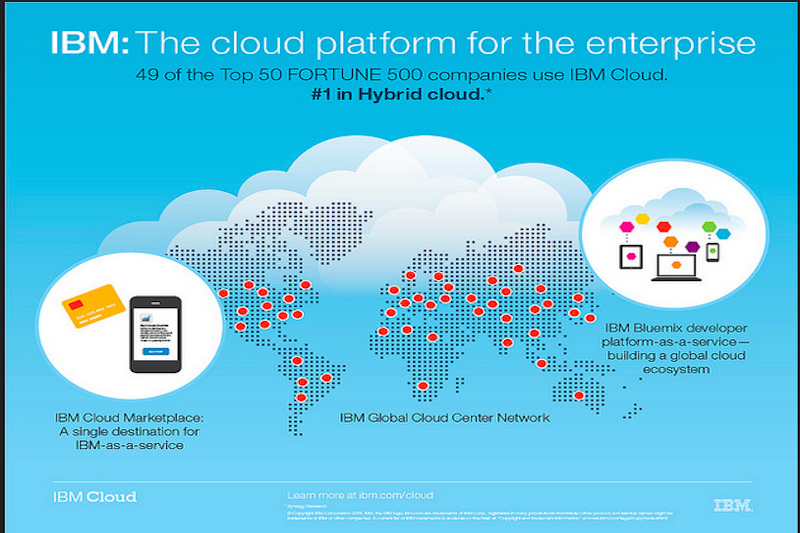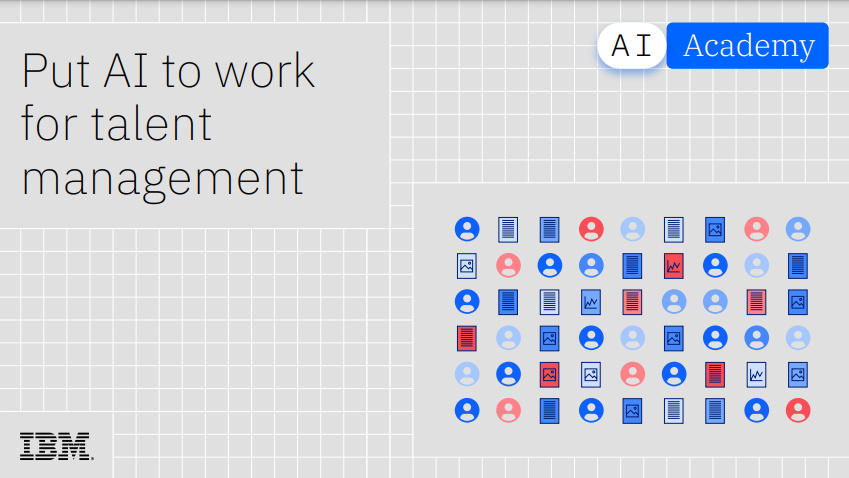Not all clouds are created equal…
Decision makers are looking at the total value proposition on offer when they’re considering a move to the cloud…


Location, location, location
Despite myriad of benefits that are clear to see, lagging concerns around cloud security remain. Such worries have been exacerbated by questions around location of data stored in the cloud.
Many vendors have tried to play down such concerns, or simply ignore them. IBM, however, has responded to customer demand by ensuring it ploughs investment into local data to ensure data sovereignty remains front of mind for all.
At the end of 2014, IBM increased its total number of cloud centres to 40 around the world, serving 12 new locations and providing resources closer to home for many of its customers. Much to the delight of UK businesses, one of those centres was located here. Further locations in Montreal and Sydney were announced in early 2015.
"We are responding to broad, global, enterprise demand for SoftLayer services," Comfort adds. "With each new location, we're not only adding more computing capacity; we're also helping customers solve data residency issues, address security and audit controls, run and scale big data applications on bare metal servers, and more. We're enabling enterprises to move to the cloud at the speed and in a way that makes the most sense for them."

(Image credit: https://www.flickr.com/photos/ibm_media/16019563106/)
Elsewhere, other firms have been enjoying the benefits of an IBM-focused cloud world.
Get the ITPro daily newsletter
Sign up today and you will receive a free copy of our Future Focus 2025 report - the leading guidance on AI, cybersecurity and other IT challenges as per 700+ senior executives
The Marriott hotel chain, for example, plans to port the majority of its core IT apps to IBM's open cloud platform over the next few years. It saw not just the potential, but the reality, of what IBM's IaaS had to offer in terms of flexibility and scalability. This, in turn, reduces then demand on in-house IT resources in terms of maintenance, support and upgrades.
"Marriott continually transforms its technology to ensure we provide a seamless and enjoyable experience for guests throughout their entire stay," claims Bruce Hoffmeister, global CIO at Marriott International.
"IBM Cloud provides the analytics to see early-stage data patterns and the scale and flexibility to enable timely, innovative new services that will meet guests' expectations in a predominantly digital world."
Let's not overlook the fact not all organisations are faced with traditional IT or LoB challenges. Look to the stars literally and you'll see IBM is involved in helping address challenges there too
Indeed, the company has helped unleash cloud innovation for NASA when it comes to helping developers to quickly and easily create next-gen innovative apps.
"The NASA International Space Apps Challenge is at the forefront of innovation, providing real-world examples of how technology can be used to by the best and brightest developers in the world to solve some of the most daunting challenges facing our civilisation," according to Sandy Carter, general manager of cloud ecosystem and developers at IBM.
"Using the IBM Cloud, IBM is making it easier for developers to solve NASA challenges by helping them leverage and make sense of data in ways that wouldn't have been possible even just a few years ago."
Looking to the future
Understanding and helping to address current and near-term cloud requirements are important and being aptly met by IBM, the focus is also on ensuring it can continue to deliver on future expectations and technological shifts.
Gartner and others have predicted hybrid cloud will be the dominant model going forward. The ability to have the best of both worlds and dynamically move workloads and app development between public and private is key.
However, no organisation will be confident to do that in an accessible and secure fashion without a trusted partnership.
Having access to a rich pool of talented minds and technologies is key here too. Furthermore, it's important to have confidence that vendors are continuing to invest not just in R&D but it the developer ecosystem so deriving business value through cloud becomes a continuous virtuous cycle rather than a one hit wonder.
To this end, IBM has launched developer tools and formed many partnerships with academia to ensure we don't encounter a cloud skills shortage any time soon.
"Putting Bluemix in the hands of today's and tomorrow's innovators creates the opportunity to foster a new generation of talent in cloud application development," Carter said.
"Our commitment to provide deep cloud expertise to programs aimed at future cloud developers from academics to professionals is necessary to sustain the growth our industry forecasts."
Letting the facts speak for themselves
Going back to the theme of all clouds not being created equal, IBM's Kevin Hazard made some interesting points recently about value being very different to cost/price.
Focusing in on AWS, he said: "People often compare SoftLayer with Amazon Web Services (AWS). It's easy to understand why. We've both built scalable infrastructure platforms to provide cloud resources to the same broad range of customers - from individual entrepreneurs to the world's largest enterprises.
"But while the desire to compare is understandable, the comparison itself isn't quite apt. The SoftLayer platform is fundamentally different from AWS. In fact, AWS could be run on SoftLayer. SoftLayer couldn't be run on AWS."
He went into further detail specifically looking at the comparisons that are often made between the two companies, making the following points:
- SoftLayer is able to provision bare metal resources to customers. This allows customers free reign over the raw compute power of a specific server configuration. This saves the customer from the two to three per cent performance hit from the hypervisor, and it prevents "noisy neighbours" from being provisioned alongside a customer's virtual server. AWS does not provision bare metal resources.
- AWS differentiates "availability zones" and "regions" for customers who want to expand their cloud infrastructure into multiple locations. SoftLayer has datacentres interconnected on a global private network. Customers can select the specific SoftLayer datacentre location they want so they can provision servers in the exact location they desire.
- When AWS customers move data between their AWS servers, they see "Inter-Region Data Transfer Out" and "Intra-Region Data Transfer" on their bills. If you're moving data from one SoftLayer facility to another SoftLayer facility (anywhere in the world), that transfer is free and unmetered. And it doesn't fight your public traffic for bandwidth.
- With AWS, customers pay a per-GB charge for bandwidth on every bill. At SoftLayer, all of our products and services include free inbound and outbound bandwidth across our global private network and our out-of-band management network. All customers get 250GB/month on virtual and 500GB/month on bare metal for public outbound bandwidth. And customers can opt for additional public outbound bandwidth with packages on monthly cloud servers including up to 20TB bringing bandwidth costs down to less than $0.075/GB.*
- SoftLayer offers a broad range of management, monitoring, and support options to customers at no additional cost. AWS charges for monitoring based on metrics, frequency, and number of alarms per resource. And having access to support requires an additional monthly cost.
"Do SoftLayer and AWS both offer Infrastructure as a Service? Yes," he added. "Does that make SoftLayer and AWS the same? No."
It's not just IBM saying this though. In a recent whitepaper, analyst firm Frost & Sullivan echoed the value proposition.
"IBM is one of few companies that provides solutions for each part of the cloud stack - infrastructure, platform, and software," wrote the firm's programme director Lynda Stadtmueller.
"Furthermore, thanks to the robust SoftLayer API, SoftLayer infrastructure services can be integrated with IBM platform and application layers. This increases the value of the cloud for enterprises, which can do more than simply deploy their applications; they can also build and manage their applications in the cloud."
Stadtmueller continued: "Cloud adoption is about more than solving today's short-term challenges. To prepare their companies for the future, enterprises must seek a strong foundation to deliver tomorrow's IT services to users, quickly, securely, and with highest availability and performance. That requires partnering with a cloud solution provider with a broad range of integrated services and the expertise to guide the enterprise along the journey."
Maggie has been a journalist since 1999, starting her career as an editorial assistant on then-weekly magazine Computing, before working her way up to senior reporter level. In 2006, just weeks before ITPro was launched, Maggie joined Dennis Publishing as a reporter. Having worked her way up to editor of ITPro, she was appointed group editor of CloudPro and ITPro in April 2012. She became the editorial director and took responsibility for ChannelPro, in 2016.
Her areas of particular interest, aside from cloud, include management and C-level issues, the business value of technology, green and environmental issues and careers to name but a few.
-
 Enterprises face delicate balancing act with data center sustainability goals
Enterprises face delicate balancing act with data center sustainability goalsNews High energy consumption, raw material requirements, and physical space constraints are holding back data center sustainability efforts, according to new research from Seagate.
By Emma Woollacott
-
 Cleo attack victim list grows as Hertz confirms customer data stolen
Cleo attack victim list grows as Hertz confirms customer data stolenNews Hertz has confirmed it suffered a data breach as a result of the Cleo zero-day vulnerability in late 2024, with the car rental giant warning that customer data was stolen.
By Ross Kelly
-
 IBM completes HashiCorp acquisition after regulatory approval
IBM completes HashiCorp acquisition after regulatory approvalNews IBM has completed its $6.4 billion acquisition of cloud automation and security firm HashiCorp,
By Emma Woollacott
-
 IBM eyes Oracle expertise gains with latest acquisition
IBM eyes Oracle expertise gains with latest acquisitionNews The deal aims to help IBM address the complexities of public sector cloud transformation
By Emma Woollacott
-
 UK regulator to investigate IBM takeover of HashiCorp
UK regulator to investigate IBM takeover of HashiCorpNews The CMA is concerned that the merger could affect competition in the cloud services market
By Emma Woollacott
-
 Channel Focus: All you need to know about IBM's partner program
Channel Focus: All you need to know about IBM's partner programHow Big Blue seeks to go deep, tackling enterprise complexity: A brief guide to the role of partners in IBM's plan to accelerate software and consulting sales.
By Fleur Doidge
-
 Put AI to work for talent management
Put AI to work for talent managementWhitepaper Change the way we define jobs and the skills required to support business and employee needs
By ITPro
-
 Let’s rethink the recruiting process
Let’s rethink the recruiting processwhitepaper If you designed your recruiting process for a new company, what would you automate to attract and hire the best talent?
By ITPro
-
 The power of AI & automation: Productivity and agility
The power of AI & automation: Productivity and agilitywhitepaper To perform at its peak, automation requires incessant data from across the organization and partner ecosystem.
By ITPro
-
 Everything you need to know about IBM’s HashiCorp acquisition
Everything you need to know about IBM’s HashiCorp acquisitionNews IBM’s acquisition of HashiCorp represents a major signal of intent for the tech giant and its hybrid cloud and AI ambitions
By Steve Ranger